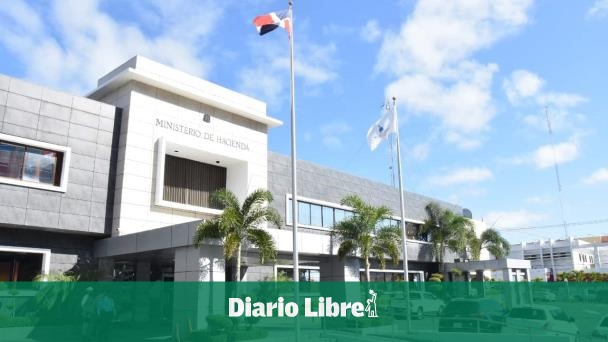The risk rating agency Standard & Poor’s (S&P Global) improved the credit rating of the Dominican Republicraising it from “BB-” to “BB”thank you “The good economic management that the Government has carried out has been the essential element” for the risk agency to improve the rating.
The credit agency report, published this Monday, highlights that the economy Dominican exhibits a high rate of economic growth and a resilience to external shocks. Additionally, it is mentioned that the economic recovery has allowed not only to exceed pre-pandemic levels but also to resume its long-term growth trend.
“The good coordination of the public and private sectors has helped to offset the demand deficits caused by the global economic slowdown and the conflict between Russia and Ukraine”says the document.
Similarly, the firm highlights the improvement of the institutional framework in public administration, which is reflected in its ability to maintain high rates of economic growthstrengthening fiscal planning and public debt management.
“”Despite economic performance, social and educational indicators remain weak””
The finance minister, José Manuel -Jochi- Vicentespecified that, despite an unfavorable international environment, the fiscal measures applied by the authorities have allowed the country to advance in its credit rating without jeopardizing the sustainability of public finances.
“This improvement by Standard & Poor’s is the best evidence of the effort we are making as a Government, both economically and institutionally, to achieve the goal we have set ourselves: achieve Investment Grade within the next decade”declared Minister Vicente.
At the end of 2021, S&P Global improved the country’s credit outlook, raising it from negative to stable, a decision based on the impressive local economic recovery, which managed to reverse the external deterioration caused by the COVID-19.
Meanwhile, the Vice Minister of Public Credit, Maria Jose Martinez, explained that the improvement to BB has a positive impact on the cost of financing taken by the State Y makes the country more attractive for receiving foreign investment.
In the report, the agency maintains that “even considering the increases in interest rates globally, S&P highlights that the country has mitigated the impacts that may be produced through liability management operations in recent years.”
possible pressures
According to the report, the company highlights that the Dominican Republic has been gradually strengthening its public institutions, which is reflected in its ability to maintain high rates of economic growth and improve your tax planning and debt management.
While “the lack of political polarization between the parties has led to a narrow spectrum and provided some visibility on economic policies, mostly pro-business and market friendly”.
However, Standard & Poor’s says that the country continues to face challenges in approving and implementing structural reforms (such as modifications to the tax system or the electricity sector). This weakness has contributed to the deterioration of public finances in the last two decades. Despite these delays in key reforms, the administration of President Luis Abinader, of the Modern Revolutionary Party (PRM), was able to advance some complementary measures.
“For example, he secured the approval of the Electricity Pact in 2021, dismantling the inefficient conglomerate of electricity companies and laying the foundations for a gradual increase in electricity rates, which were frozen for 10 years. He also strengthened the independence of the judiciary to combat corruption.
However, the decision of the government of postponing a long-standing tax reform and the temporary suspension of electricity rate increases demonstrate deficiencies in its ability to take forceful and timely measures to strengthen public finances.
“We do not expect significant tax reform over the next two years, even though the government it has a majority in both houses of Congress and great popularity,” the report says.
Although, he says there could be complementary measures to maintain investment-friendly policies and other measures to increase tax revenue and contain spending.
Increase
According to the report, supported by the good prospects for tourism and private sector investment in free zones and construction, GDP will grow around 4% – 5% over the next three years. As a result, GDP per capita will average $11,000 over the next three years. The Dominican Republic is one of the first countries in the region to resume its long-term growth trend before the pandemic. “Despite the solid economic performance, the country’s social and educational indicators remain relatively weak. Poverty has steadily declined over the past decade, but remains at around 20%. As a product of the pandemic, the quality of jobs has deteriorated and the informality rate has risen to around 60 percent.
The central bank has tightened monetary policy, the report says, as inflation rose due to rising energy and food globally and electricity adjustments here. The BC increased its rates to 8.5%, after keeping them at 3% during the pandemic.








